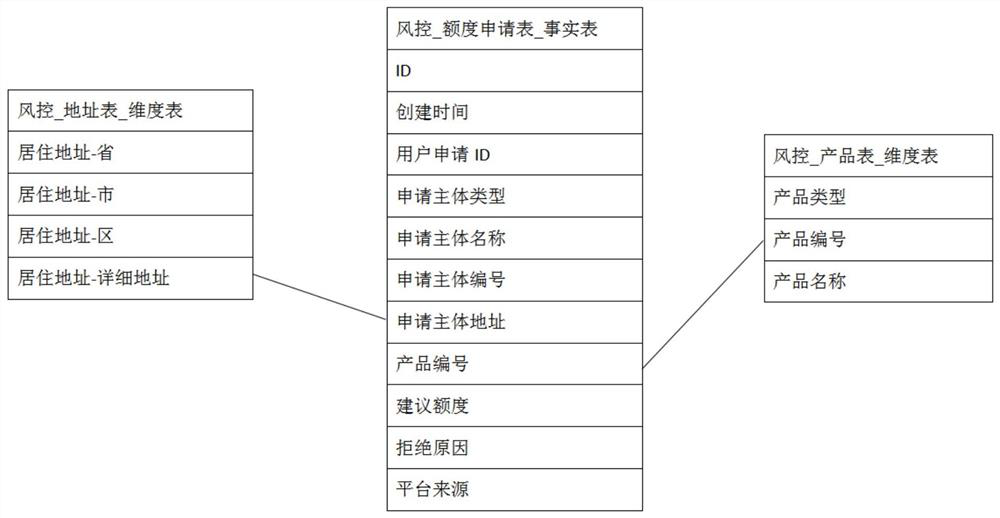Data modeling method for data mart and data warehouse
A data mart and data warehouse technology, applied in the data modeling field of data marts and data warehouses, can solve problems such as inability to reuse, data islands, and inability to guarantee the standardization, consistency, and accuracy of enterprise data, and achieve It is convenient to carry out decision-making analysis, facilitate traceability, and ensure the effect of data standardization
- Summary
- Abstract
- Description
- Claims
- Application Information
AI Technical Summary
Problems solved by technology
Method used
Image
Examples
Embodiment 1
[0033] A data modeling approach for data marts and data warehouses such as figure 1 shown, including the following steps:
[0034] The steps to build the bus architecture include the following steps:
[0035]Automatically integrate according to preset data specifications and data standards, and integrate into public consistent dimensions as master data. Data specifications and data standards are formulated by those skilled in the art according to industry standards. Master data is common data among various business data, including customers, products, institutions, channels and addresses. The business system is an intelligent system used by each business department in the enterprise. Since the business of each business department is different, the business data obtained by each business system is also different. Through the integration of the common data among the business data, the establishment of The association between various business data.
[0036] Construct a standar...
Embodiment 2
[0062] The difference between this embodiment and Embodiment 1 lies in: a data modeling method for data marts and data warehouses, further comprising the following steps:
[0063] Common processing steps specifically include the following steps:
[0064] According to the preset common requirements, business data is extracted from the partial source model layer, and loaded to the common processing layer, and the extracted business data is integrated to automatically generate a common basic table, and the common basic table is stored. Common requirements are the basic information requirements that all business systems in the enterprise need to call, such as business product information that all business systems need. By extracting business product data, the business product data is integrated to generate a product table, such as the product table of the risk control credit line. When in use, the common basic table can be directly called for use. By sharing the common basic tabl...
Embodiment 3
[0066] The difference between this embodiment and Embodiment 2 lies in: a data modeling method for data marts and data warehouses, which also includes the following steps:
[0067] The steps of applying the marketplace include the following steps:
[0068] According to the preset application requirements, business data is regularly extracted from the partial source model layer, and loaded to the application market layer, and data analysis and calculation are performed based on the extracted business data to generate application analysis results. The application requirements are the application analysis requirements for the high frequency of use of various business systems in the enterprise. For example, for the wind control system, data analysis such as vintage, migration rate, reminder rate, rolling rate, and first pass rate will be carried out regularly, so as to grasp The repayment information of corporate customers and the effectiveness of corporate marketing strategies. ...
PUM
 Login to View More
Login to View More Abstract
Description
Claims
Application Information
 Login to View More
Login to View More - R&D
- Intellectual Property
- Life Sciences
- Materials
- Tech Scout
- Unparalleled Data Quality
- Higher Quality Content
- 60% Fewer Hallucinations
Browse by: Latest US Patents, China's latest patents, Technical Efficacy Thesaurus, Application Domain, Technology Topic, Popular Technical Reports.
© 2025 PatSnap. All rights reserved.Legal|Privacy policy|Modern Slavery Act Transparency Statement|Sitemap|About US| Contact US: help@patsnap.com



